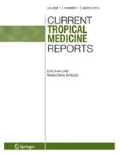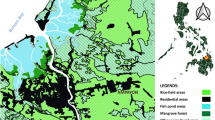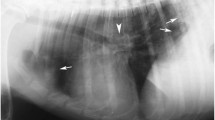Abstract
Purpose of Review
Angiostrongyliasis is contracted by the ingestion of or exposure to the zoonotic parasite Angiostrongylus cantonensis, which requires two hosts to complete its life cycle. Rats are known to be the definitive hosts and mollusks are intermediate hosts. It is the intermediate host, or infected paratenic hosts that can pass the infective stage of the disease to humans and other susceptible animals. The purpose of this review is to examine the growing threat of A. cantonensis and its consequences, with particular emphasis on Hawai'i.
Recent Findings
The increase in disease cases appears to correlate with the migration of the mollusk Parmarion martensi (semi-slug) in Hawai'i. The semi-slug is a very effective host because it carries a heavy burden of the parasite. Rats in Hawai'i also carry heavy parasite burdens. Human diagnosis is difficult due to varied incubation times, multitude of symptoms which can mimic other illnesses, and lack of a low-risk effective diagnostic. Treatment varies with the severity of the symptoms.
Summary
The introduction and proliferation of the invasive species A. cantonensis, along with a most efficient intermediate host P. martensi, has resulted in an increase in angiostrongyliasis in Hawai'i. In Hawai'i, consumption of local produce is encouraged and the use of rainwater harvesting is a necessity for many on Hawai'i Island, both of which elevate the risk of acquiring angiostrongyliasis. A better understanding of how to best reduce the risk of infection is needed through comprehensive research and community education.


Similar content being viewed by others
References
Papers of particular interest, published recently, have been highlighted as: • Of importance
Wang QP, Lai DH, Zhu XU, Chen XG, Lun ZR. Human angiostrongyliasis. Lancet Infect Dis. 2008;8(10):621–30. https://doi.org/10.1016/S1473-3099(08)70229-9.
Wang QP, Wu ZD, Wei RL, Owen ZR, Lun ZR. Human Angiostrongylus cantononsis: an update. Eur J Clin Microbiol Infect Dis. 2012;31(4):389–95. https://doi.org/10.1007/s10096-0111328-5.
• Barratt J, Chan D, Sandaradura I, Malik R, Spielman D, Lee R, et al. Angiostrongylus cantonensis: a review of its distribution, molecular biology and clinical significance as a human pathogen. Parasitology. 2016;143(09):1087–118. A very good review and resource as an overview of the current situation of this parasite, especially in Australia. https://doi.org/10.1017/S0031182016000652.
Chen HT. Un nouveau nematode pulmonaire, pulmonema cantonensis. NGN sp Des rats de Canton Ann Parasit. 1935;13:312.
• Stockdale-Walden HD, Slapcinsky JD, Roff S, Mendieta Calle J, Goodwin ZD, Stern J, Corlett R, Conway J, McIntosh A. Geographic distribution of Angiostrongylus cantonensis in wild rats (Rattus rattus) and terrestrial snails in Florida, USA. PlosOne. 2017. Published online May 18, 2017. An important paper marking the widespread establishment of A. cantonensis on the mainland USA (Florida).
Qvarnstrom Y, Bishop HS, da Silva AJ. Detection of rat lungworm in intermediate, definitive, and paratenic hosts obtained from environmental sources. Hawai’i J Med Public Health. 2013;72(5):63–9. https://doi.org/10.1371/journal.pone.0177910.
Jarvi SI, Quarta S, Jacquier S, Howe K, Bicakci D, DaSalla C, Lovesy N, Snook K, McHugh R, Niebuhr C. High prevalence of Angiostrongylus cantonensis (rat lungworm) on eastern Hawai'i Island: a closer look at life cycle traits and patterns of infection in wild rats (Rattus spp). PLoS ONE 2017;12(12):e0189458. https://doi.org/10.1371/journal.pone.0189458.
• Mackerras MJ, Sandars DF. The life history of the rat lung-worm, Angiostrongylus cantonensis (Chen) (Nematoda: Metastrongylidae). Aust J Zool. 1955;3(1):1–21. This is one of the most comprehensive descriptions of the life cycle and history of A. cantonensis in the literature, even today. https://doi.org/10.1071/ZO9550001.
Kliks MM, Palumbo NE. Eosinophilic meningitis beyond the Pacific basin: the global dispersal of a peridomestic zoonosis caused by Angiostrongylus cantonensis, the nematode lungworm of rats. Soc Sci Med. 1992;34(2):199–212. https://doi.org/10.1016/0277-9536(92)90097-A.
Hollingsworth RG, Cowie RH. Apple snails as disease vectors. In: Joshi RC, Sebastian LS, editors. Global advances in ecology and management of golden apple snails. Nueva Ecija: Philippine Rice Research Institute; 2006. p. 121–32.
Jarvi SI, Farias MEM, Howe K, Jacquier S, Hollingsworth R, Pitt W. Quantitative PCR estimates Angiostrongylus cantonensis infection levels in semi-slugs (Parmarion martensi). Mol Biochem Parasitol. 2012;185(2):174–6. https://doi.org/10.1016/j.molbiopara.2012.08.002.
Kim JR, Hayes KA, Yeung NW, Cowie RH. Diverse gastropod hosts of Angiostrongylus cantonensis, the rat lungworm, globally and with a focus on the Hawaiian islands. PLoS One. 2014;9:1–10.
Wallace GD, Rosen L. Studies on eosinophilic meningitis. V. molluscan hosts of Angiostrongylus cantonensis on Pacific Islands. Am J Trop Med Hyg. 1969;81:206–16.
Rosen L, Chappell R, Laqueur GL, Wallace GD, Weinstein PP. Eosinophilic meningoencephalitis caused by a metastrongylid lungworm of rats. JAMA. 1962;179(8):620–4. https://doi.org/10.1001/jama.1962.03050080032007.
Hollingsworth RG, Kaneta RK, Sullivan JJ, Bishop HS, Qvarnstrom Y, da Silva AJ, et al. Distribution of Parmarion cf. martensi, a new semi-slug pest on Hawai’i Island, and its potential as a vector for human angiostrongyliasis. Pac Science. 2007;61(4):457–68.
Qvarnstrom Y, Aramburu da Silva AC, Teem JL, Hollingsworth R, Bishop H, Graeff-Teixeira C, et al. Improved molecular detection of Angiostrongylus cantonensis in mollusks and other environmental samples with a species-specific internal transcribed spacer 1-based TaqMan assay. Appl Environ Microbiol. 2010;76(15):5287–9. https://doi.org/10.1128/AEM.00546-10.
Howe K, Jarvi SI. Angiostrongyliasis (rat lungworm disease): viewpoints from Hawai'i Island. ACS Chem Neurosci. 2017;8(9):1820–2. https://doi.org/10.1021/acschemneuro.7b00299.
Macomber PS. Guidelines on rainwater catchment systems for Hawai'i. College of Tropical Agriculture and Human Resources, University of Hawai'i at Manoa. 2010 ISBN 1–929325–23-1.
Donohue MJ, Macomber PSH, Okimoto D, Lerner DT. Survey of rainwater catchment use and practices on Hawai'i Island. J Contemp Water Res Education. 2017;161(1):33–47. https://doi.org/10.1111/j.1936-704X.2017.3250.x.
Cheng TC, Alicata JE. Possible role of water in the transmission of Angiostrongylus cantonensis (Nematoda: Metastrongylidae). J Parasitol. 1964;50(sec. 2 supplement):39.
Richards CS, Merritt JW. Studies on Angiostrongylus cantonensis in molluscan intermediate hosts. J Parasitol. 1967;53(2):382–8. https://doi.org/10.2307/3276595.
Crook JR, Fulton SE, Supanwong K. The infectivity of third stage Angiostrongylus cantonensis larvae shed from drowned Achatina fulica snails and the effect of chemical agents on infectivity. Trans R Soc Trop Med Hyg. 1971;65(5):602–5. https://doi.org/10.1016/0035-9203(71)90043-5.
Wang LC, Chao D, Chen WR. Experimental infection routes of Angiostrongylus cantonensis in mice. J Helminthol. 1991;65(04):296–300. https://doi.org/10.1017/S0022149X00010890.
Foster CE, Nicholson EG, Chun AC, Gharfeh M, Anvari S, Seeborg FO, et al. Angiostrongylus cantonensis infection: a cause of fever of unknown origin in pediatric patients. Clin Infect Dis. 2016;63(11):1475–8. https://doi.org/10.1093/cid/ciw606.
Hammoud RA, Nayes SL, Murphy JR, Heresi GP, Butler IJ, Pérez N. Angiostrongylus cantonensis meningitis and myelitis, Texas USA. Emer Infec Dis. 2017;23(6):1037–8. https://doi.org/10.3201/eid2306.161683.
Lindo JF, Escoffery CT, Reid B, Codrington G, Cunningham-Myrie C, Eberhard ML. Fatal autochthonous eosinophilic meningitis in a Jamaican child caused by Angiostrongylus cantonensis. Am J Trop Med Hyg. 2004;70(4):425–8.
Prociv P, Spratt DM, Carlisle MS. Neuro-angiostrongyliasis: unresolved issues. Int J Parasitol. 2000;30(12-13):1295–303. https://doi.org/10.1016/S0020-7519(00)00133-8.
Prociv P. Parasitic meningitis: crossing paths with the rat lungworm (Angiostrongylus cantonensis). Med J Aust. 1999;170(11):517–8.
Yii CY. Clinical observations of eosinophilic meningitis and meningoencephalitis caused by Angiostrongylis cantonensis on Taiwan. Am J Trop Med and Hyg. 1976;25, No. 2(2):233–49. https://doi.org/10.4269/ajtmh.1976.25.233.
Jarvi SI, Pitt WC, Farias ME, Shiels L, Severino MG, Howe KM, et al. Detection of Angiostrongylus cantonensis in the blood and peripheral tissues of wild Hawai'i rats (Rattus rattus) by a quantitiative PCR (qPCR) assay. PLOS One. 2015. doi:https://doi.org/10.1371/journal.pone.0123064
Punyagupta S. Angiostrongyliasis: clinical features and human pathology. In: Cross JH, editor. Studies on angiostrongyliasis in eastern Asia and Australia. NAMRU-2-SP-44. Taipei, Taiwan: US Army Medical Research Unit No. 2:1979:p 138–150.
Cross JH, Chi JC. ELISA for the detection of A cantonensis antibodies in patients with eosinophilic meningitis. SE Asian J of Trop Med and Pub Health. 1982;13:73–6.
Jaroonvesama N. Differential diagnosis of eosinophilic meningitis. Parasitol Today. 1988;4(9):262–6. https://doi.org/10.1016/0169-4758(88)90146-9.
Eamsobhana P, Yoolek A, Punthuprapasa P. Dot-blot ELISA for the immunological detection of specific antibody to Parastrongylus cantonensis. Trop Biomed. 2003a;20:1–6.
Eamsobhana P, Tungtrongchitr A, Wanachiwanawin D, Yong HS, Mak JW. Characterization of a 31-kDa specific antigen from Parastrongylus cantonensis Nematoda: Metastrongylidae. Int Med Res J. 1998;2:9–12.
Eamsobhana P, Yong HS. Immunological diagnosis of human angiostrongyliasis due to Angiostrongylus cantonensis Nematoda: Angiostrongylidae. Int J of Infect Dis. 2009;13(4):425–31. https://doi.org/10.1016/j.ijid.2008.09.021.
Eamsobhana P, Yoolek A, Kreethapon N. Blinded multi-laboratory evaluation of an in-house dot-blot ELISA kit for diagnosing human parastrongyliasis. Southeast Asian J Trop Med Public Health. 2003b;34(1):1–6.
Eamsobhana P, Lim PE, Yong HS. Genetic diversity of the rat lungworm, Angiostrongylus cantonensis, the major cause of eosinophilic meningitis. Hawai’i J Med & Public Health. 2013;72(6 Supplement2):15–7.
Graeff-Teixeira C, Ara’mburu da Silva AC, Yoshimura K. Update on eosinophilic meningoencephalitis and its clinical relevance. Clin Microbiol Rev. 2009;22(2):322–48. https://doi.org/10.1128/CMR.00044-08.
Murphy GS, Johnson S. Clinical aspects of eosinophilic meningitis and meningoencephalitis caused by Angiostrongylus cantonensis, the rat lungworm. Hawai’i J Med & Public Health. 2013;72(Supplement 2):35.
Hwang KP, Chen ER. Larvacidal effect of albendazole against Angiostrongylus cantonensis in mice. Am J Trop Med Hyg. 1988;39(2):191–5. https://doi.org/10.4269/ajtmh.1988.39.191.
Tu WC, Lai SC. Angiostrongylus cantonensis: efficacy of albendazole-dexamethasone co-therapy against infection-induced plasminogen activators and eosinophilic meningitis. Exp Parasitol. 2006;113(1):8–15. https://doi.org/10.1016/j.exppara.2005.11.017.
Jitpimolmard S, Sawanyawisuth K, Morakote N, Vejjajiva A, Puntumetakul M, Sanchaisuriya K, et al. Albendazole therapyfor eosinophilic meningitis caused by Angiostrongylus cantonensis. Parasitol Res. 2007;100(6):1293–6. https://doi.org/10.1007/s00436-006-0405-7.
Feng F, Feng Y, Liu Z, Li WH, Wang WC, Wu ZD, et al. Effects of albendazole combined with TSII-A (a Chinese herb compound) on optic neuritis caused by Angiostrongylus cantonensis in BALB/c mice. Parasites and Vectors. 2015;8(1):606. https://doi.org/10.1186/s13071-015-1214-6.
Slom TJ, Cortese MM, Gerber SI, Jones RC, Holtz TH, Lopez AS, et al. An outbreak of eosinophilic meningitis caused by Angiostrongylus cantonensis in travelers returning from the Caribbean. N Engl J Med. 2002;346(9):668–75. https://doi.org/10.1056/NEJMoa012462.
Hidelaratchi MD, Riffsy MT, Wijesekera JC. A case of eosinophilic meningitis following monitor lizard meat consumption, exacerbated by anthelminthics. Ceylon Med J. 2005;50(2):84–6.
Liu IH, Chung YM, Chen SJ, Cho WL. Necrotizing retinitis induced by Angiostrongylus cantonensis. Am J Ophthalmol. 2006;141(3):577–9. https://doi.org/10.1016/j.ajo.2005.09.033.
Wang LC, Jung SM, Chen CC, Wong HF, Wan DP, Wan YL. Pathological changes in the brain of rabbits experimentally infected with Angiostrongylus cantonensis after albendazole treatment: histopathological and magnetic resonance imaging studies. J Antimicrobial Chemother. 2006;57(2):294–300. https://doi.org/10.1093/jac/dki430.
Kliks MM, Kroenke K, Hardman JM. Eosinophilic radiculomyeloencephalitis: an angiostrongyliasis outbreak in American Samoa related to ingestion of Achatina fulica snails. Am J Trop Med Hyg. 1982;31(6):1114–22. https://doi.org/10.4269/ajtmh.1982.31.1114.
Bowden DK. Eosinophilic meningitis in the new Hebrides: two outbreaks and two deaths. Am J Trop Med Hyg. 1981;30(5):1141–3. https://doi.org/10.4269/ajtmh.1981.30.1141.
Parham P. The immune system 4th ed. Garland Science, Taylor & Francis Group LLC. 2015. p. 161.
Pospisil R, Fitts MG, Mage RG. CD5 is a potential selecting ligand for B cell surface immunoglobulin framework region sequences. J of Exp Med. 1996;184(4):1279–84. https://doi.org/10.1084/jem.184.4.1279.
Wan KS, Weng WC. Eosinophilic meningitis in a child raising snails as pets. Acta Trop. 2004;90(1):51–3. https://doi.org/10.1016/j.actatropica.2003.09.019.
Chotmongkol V, Sawadpanitch K, Sawanyawisuth K, Louhawilai S, Limpawattana P. Treatment of eosinophilic meningitis with a combination of prednisolone and mebendazole. Am J Trop Med Hyg. 2006;74(6):1122–4.
Leone S, De Marco M, Ghirga P, Nicastri E, Esposito M, Narciso P. Eosinophilic meningitis in a returned traveler from Santo Domingo: case report and review. J Travel Med. 2007;14(6):407–10. https://doi.org/10.1111/j.1708-8305.2007.00152.x.
Diao Z, Chen X, Yin C, Wang J, Qi H, Ji A. Angiostrongylus cantonensis: effect of combination therapy with albendazole and dexamethasone on Th cytokine gene expression in PBMC from patients with eosinophilic meningitis. Exp Parasitol. 2009;123(1):1–5. https://doi.org/10.1016/j.exppara.2009.04.016.
Lv S, Zhang Y, Chen SR, Wang LB, Fang W, Chen F, et al. Human angiostrongyliasis outbreak in Dali. Chin PLoS Negl Trop Dis. 2009;3(9):e520. https://doi.org/10.1371/journal.pntd.0000520.
Zhou Z, Barennes H, Zhou N, Ding L, Zhu YH, Strobel M. Two outbreaks of eosinophilic meningitis in Yunann (China) clin-ical, epidemiological and therapeutical issues. Bull Soc Pathol Exot. 2009;102(2):75–80.
Ueda M, Takeuchi Y, Ochiai J, Mabuchi C, Niwa J. A case of myelitis with eosinophilia of the cerebrospinal fluid. Rinsho Shinkeigaku. 2015;55(9):651–3. https://doi.org/10.5692/clinicalneurol.cn-000698.
Howe K. A severe case of rat lungworm disease in Hawai’i. Hawai’i J Med Public Health. 2013;72(Supplement 2):46–8.
Author information
Authors and Affiliations
Corresponding author
Ethics declarations
Conflict of Interest
The authors declare that they have no conflict of interest.
Human and Animal Rights and Informed Consent
This article does not contain any studies with human or animal subjects performed by any of the authors.
Additional information
This article is part of the Topical Collection on Tropical Parasitology
Rights and permissions
About this article
Cite this article
Jarvi, S.I., Howe, K. & Macomber, P. Angiostrongyliasis or Rat Lungworm Disease: a Perspective From Hawai'i. Curr Trop Med Rep 5, 59–66 (2018). https://doi.org/10.1007/s40475-018-0132-z
Published:
Issue Date:
DOI: https://doi.org/10.1007/s40475-018-0132-z




